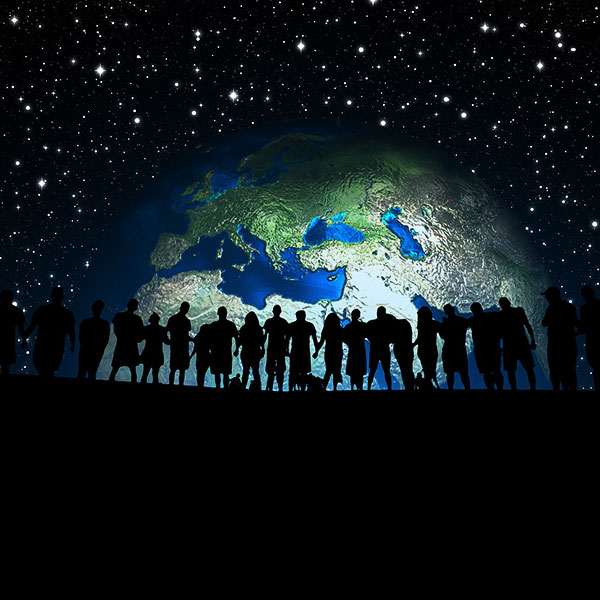Homo sapiens have been around for approximately 250,000 to 300,000 years. We are now the dominant species on the planet. I say this in regards to the amount of energy and resources we consume in comparison to other species. There may be other species that technically outnumber us, however we control the planet and its resources. One of the biggest reasons for this, is the growth in population of our species. Let’s explore.
Our place in the geological time scale of earth
In terms of the geological time scale of earth, Homo sapiens evolved in the current eon, Phanerozoic (there have been four in total), in the current era Cenozoic (there are three eras in the current eon), and in the current period Quaternary (the current era is split into three periods of time). The quaternary period is split into two epochs: the Pleistocene dating 2.5 million years ago to 11,700 years ago, and the Holocene dating 11,700 years ago to today. Homo sapiens evolved in the Pleistocene and dominates coming into the Holocene. See here for more information on the geological time scale of the earth.
The Evolution of Earth’s Geological Time Scale
Our place in the time scale of Homo sapiens
The human time scale can be split into the following. The Palaeolithic (Old Stone Age) runs from around 300,000 years ago to 10,000 years ago. The New Stone Age (Neolithic) runs from around 10,000 years ago to the start of the Bronze Ages, which start at different times across the globe. Another way to separate human time after the Palaeolithic, is by defining ‘Agrarian civilisations’ which means civilisations based on agriculture and runs from 10,000 years ago to around 500 years ago. Then we have the modern age. This can be generally categorised by the fact that this is when globalisation really began, individual agricultural civilisations began to essentially merge into a global system with industrial power, rise of technology, global economy and trade.
The Palaeolithic takes up around 96% of the time we have been around, the agrarian time accounts for 4% and the modern age is less than 1%. There have been approximately 80 billion humans (Homo sapiens) since we evolved. Of that, 12% lived in the Palaeolithic, 68% lived in agrarian civilisations and 20% in the modern era. No matter how important we deem ourselves to be today, based on these figures we are a small part of human history and an even smaller part of earth’s history.
Population rise and decline
Despite the general rise in population, there were regional declines. This is thought to be caused by a general evolutionary trait of population growth and decline amongst all species. The pattern is, migration, innovation, growth, overexploitation, decline and stabilisation. As the human population grew and the lifestyle became sedentary with the growth of agriculture, towns and cities grew which drew more and more people closer together. Local resources would have been stripped too quickly and so this could lead to a number of things occurring: famine, disease, irrigation issues, or even local climate issues.
Population numbers
On the whole though, the population has increased markedly over the last few centuries, there is evidence to suggest that the population will level out and not continue to increase at the current rate.
30,000 years ago – several hundred thousand humans worldwide
10,000 years ago – 5-6 million humans worldwide
5,000 years ago – 50 million
1,000 years ago – 250 million
1700 CE – 700 million
1804 CE – 1 billion
1927 – 2 billion
1960 – 3 billion
1974 – 4 billion
1987 – 5 billion
1998 – 6 billion
2010 – 7 billion
2022 – 8 billion





